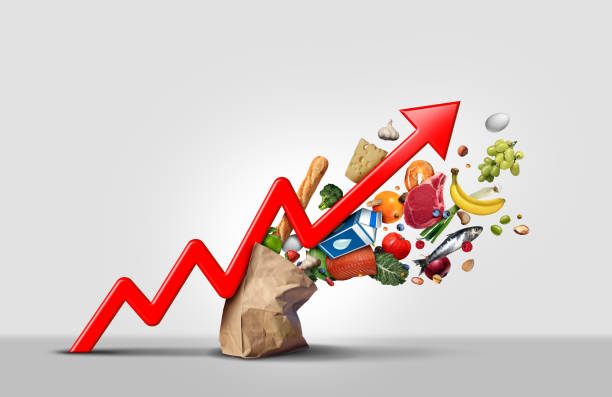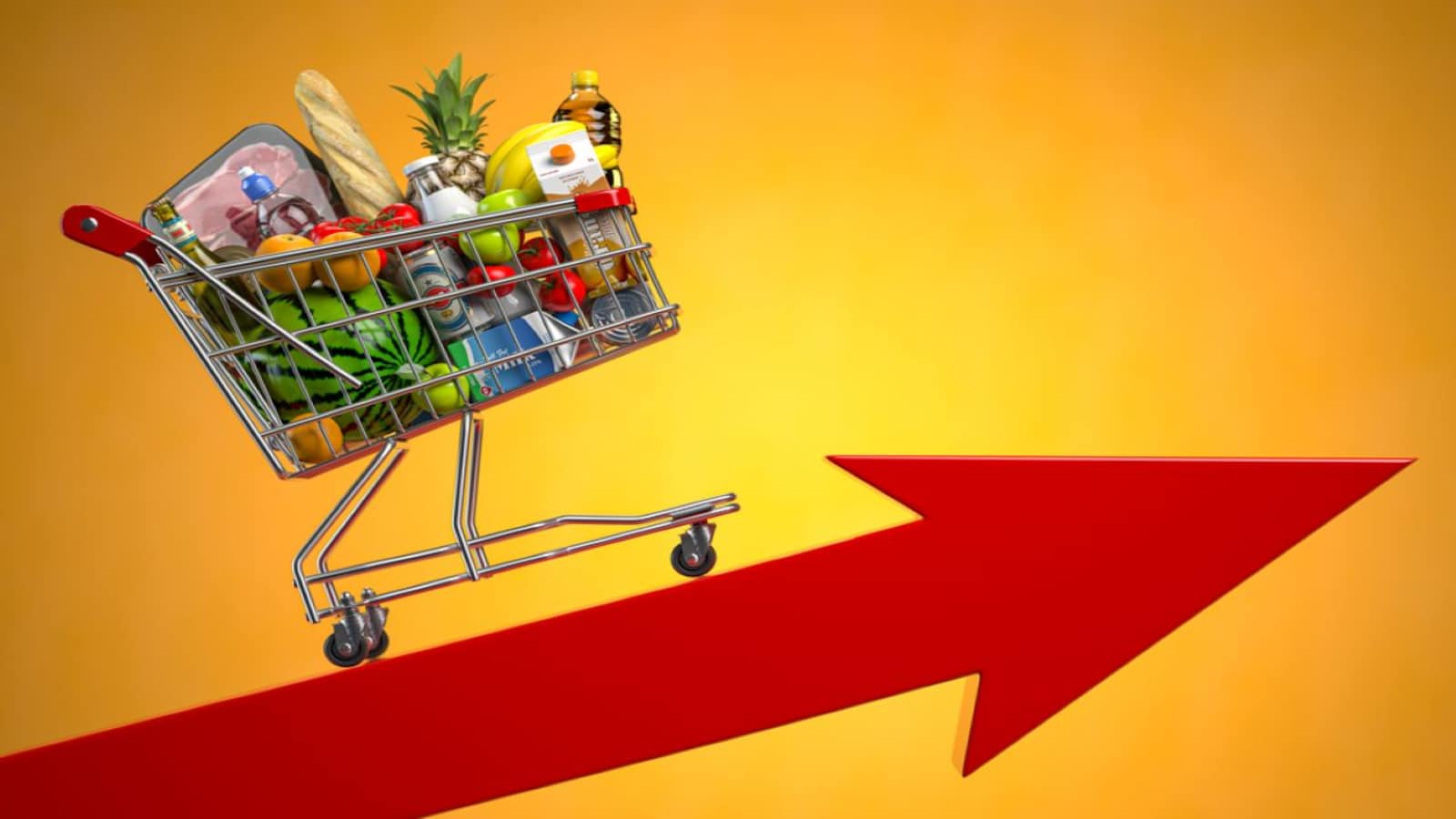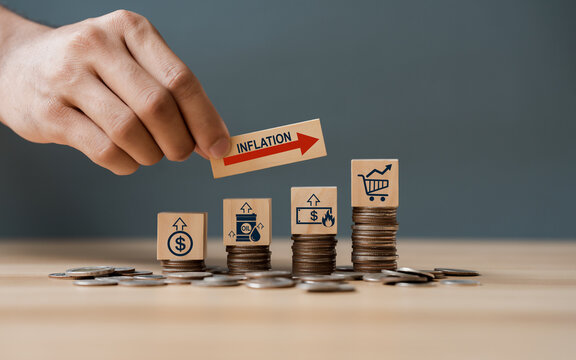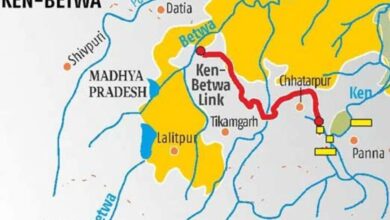Why Countries Like India Are Not Able To Control Inflation? With Elections In 2024 Does The Modi Govt Have A Plan?
Inflation, the persistent rise in prices of goods and services, has long posed a challenge for countries worldwide, and India is no exception. With the upcoming 2024 elections, the Indian government, led by Prime Minister Narendra Modi, faces mounting pressure to address the nation's inflation woes. As the cost of living escalates, the government's ability to manage inflation takes center stage. The recent surge in India's retail inflation rate, hitting a 15-month high of 7.44% in July, has sparked concerns and raised questions about the government's strategies to combat this economic issue.

Inflation Battle, Dependence on Vegetable Prices And Modi Govt
The intricacies of inflation control often hinge on seemingly ordinary factors, like vegetable prices, which currently are playing havoc when it comes to household budgets.
India’s retail inflation rate is poised to reenter the comfort band of 2-6% outlined by the central bank, the Reserve Bank of India (RBI); this, however, depends on the prices of vegetables experiencing a decline.
This perspective is shared by Ashima Goyal, a prominent member of India’s Monetary Policy Committee (MPC), who asserts that this transition will not only steer inflation back within the desired range but will also provide a clearer projection of inflation’s trajectory.
The erratic surge in the prices of food items, particularly staples like tomatoes, has indeed been noteworthy. Yet, Goyal stresses that historical trends indicate a natural softening of vegetable prices following such spikes due to seasonal patterns. Hence, expressing her optimism, she confidently states, “I do not think inflation will be out of our comfort band once vegetable prices soften.”

In July, India witnessed its retail inflation reaching a 15-month zenith of 7.44%, primarily propelled by elevated food costs. The consumer food price index, specifically, soared to a three-year high of 11.51% in the preceding month.
These figures were disclosed subsequent to the Reserve Bank of India-led MPC’s decision to maintain the status quo on policy rates in its recent meeting. RBI Governor Shaktikanta Das, elaborating on this, anticipates a gradual easing of vegetable prices by September.
The inflation surge hasn’t solely afflicted vegetables; the prices of cereals, pulses, and spices have also escalated. This has prompted the government to take rapid supply-side measures to address the issue at hand.
Ashima Goyal observes that while inflation pertaining to cereals has persisted since the Ukraine war, she is optimistic about its transient nature. She underlines the government’s array of supply-side tools, including leveraging stocks and trade strategies, to counterbalance and eventually curtail these inflationary pressures.

In the broader fiscal realm, Goyal foresees the government maintaining fiscal prudence even as it undertakes measures to stabilize inflation. The government’s fiscal deficit target of 5.8% of GDP in 2023-24 underscores this commitment.
Goyal suggests that strategic steps, such as reducing fuel prices, can not only alleviate household inflation concerns but also have a greater impact on oil marketing companies than on government finances directly.
RBI On Inflation Curb
In a notable move earlier this month, the RBI adopted a liquidity-tightening stance by mandating an additional cash reserve requirement on banks; this pushed short-term interest rates above the repo rate of 6.5%.
The significance of this approach was highlighted in the minutes published by RBI Deputy Michael Patra, who emphasized that maintaining liquidity tightness is paramount in the central bank’s mission to bring India’s inflation back within the target range.
Ashima Goyal stresses the careful balancing act, noting that while tightening liquidity is vital, it must not lead to short-term rates surpassing the repo rate mandated by the MPC. In her words, “If you want to raise rates, raise the repo rate.”
Amid these economic maneuvers, a pertinent question emerges; To what extent does the RBI wield influence over India’s inflation dynamics?
As the RBI unveils its most recent monetary policy stance, a new research paper probes the appropriateness of India’s inflation-targeting framework.
This inquiry has gained traction due to the distinctive nature of India’s labor market. Paradoxically, the RBI’s decisions to substantially increase interest rates over the past year might have inadvertently worked against reining in inflation, as they could have adverse implications for the common man.

Modi’s 2024 Dilemma
In the broader context of India’s political landscape, inflation has always been an issue of heightened sensitivity. With periodic elections across various levels of government, the ruling parties are acutely aware that economic policies and price control have a direct bearing on public sentiment, and this awareness fuels their concerted efforts to maintain price stability.
The previous Congress-led United Progressive Alliance (UPA) government grappled with persistently high inflation rates in the aftermath of the global economic downturn, a factor often cited as a catalyst for its electoral defeat in 2014. Prime Minister Narendra Modi acknowledged the gravity of this challenge in his speeches, pledging more robust measures to tackle inflation.
As India inches closer to the 2024 elections, Prime Minister Modi’s government is facing the pressing need to curb inflation to sustain its popularity.
The introduction of a Rs 1 trillion fund aimed at mitigating inflation, despite its origin in the government’s belt-tightening across ministries, reveals the urgency in addressing the issue. This urgency is heightened by the current inflationary pressures, which, exemplified by rising tomato, onion, and fuel prices, threaten the government’s assurance of a triumphant return in the 2024 general elections.
This contrast raises an inevitable question about India’s economic trajectory under Prime Minister Modi’s leadership.
Is the nation truly progressing under his governance, or is it grappling with an enduring issue of inflation unrelated to his policies?
The Prime Minister’s assertion that India cannot simply rest on the laurels of being relatively better off than other countries implies that rising prices are a global phenomenon beyond the scope of his administration’s actions.

Undoubtedly, inflation holds immense political weight. It forces individuals to confront their financial limitations, thus emphasizing the need for adequate employment opportunities.
As inflation looms, citizens yearn for better-paying and secure jobs, which, in turn, raises concerns about the government’s ability to deliver on its promises of job creation.
Despite the intricacies in Prime Minister Modi’s discourse to mitigate the prevailing economic difficulties, one truth is resoundingly clear, he is intensely striving to communicate that his dynamic leadership is instrumental in ushering in better days for the ordinary citizen.
In this context, the government’s recent policy measures, such as the ban on rice exports and adjustments to interest rates on housing loans, hold a singular objective: influencing the anonymous yet impactful performance of citizens’ votes.
Yet, history bears witness to how inflation can sway political destinies.

In 2014, Prime Minister Modi himself capitalized on rising fuel prices to bolster his ascendancy, reflecting the deep impact of inflation on voters’ wallets and perceptions.
With time running short, Prime Minister Modi’s administration is acutely aware that inflation, much like Nemesis, is chasing them. Failure to wrest control from inflation’s grip could translate into poor governance performance, a sentiment that voters are unlikely to overlook.
In this pivotal juncture, conventional strategies, such as blaming the Congress Party or invoking cultural and historical narratives, might not suffice.
Underpinning Prime Minister Modi’s “guarantee” of a triumphant return in 2024 and India’s ascent as an economic superpower is the stark reality of inflation’s everyday consequences.
The absence of affordable staples like onions from Indian kitchens and the altered taste of pizzas and burgers—once cherished symbols of upward mobility—underscore the tangible impact of inflation on ordinary lives.
As the festive season approaches, the financial demands of celebrations loom large, and crucial Assembly elections in significant states further intensify the situation.
Prime Minister Modi, having faced electoral losses in Karnataka and Himachal Pradesh, is acutely aware of the stress that inflation can exert on governments across the globe.
Recent data indicates a fluctuating employment scenario, with a drop in total joblessness rates and a rise in urban unemployment and a more formidable opposition landscape further compounds this challenge.
While Prime Minister Modi managed to secure the faith of around 50% of India’s voters in 2019, the other 50% perhaps remain unconvinced.
The Last Bit, For the Prime Minister and the BJP, the crux lies in sustaining the allure of their vision for a brighter future. Amid economic challenges, the narrative of an aspirational India journeying toward greatness means nothing if the prices of essential commodities remain unchecked!




